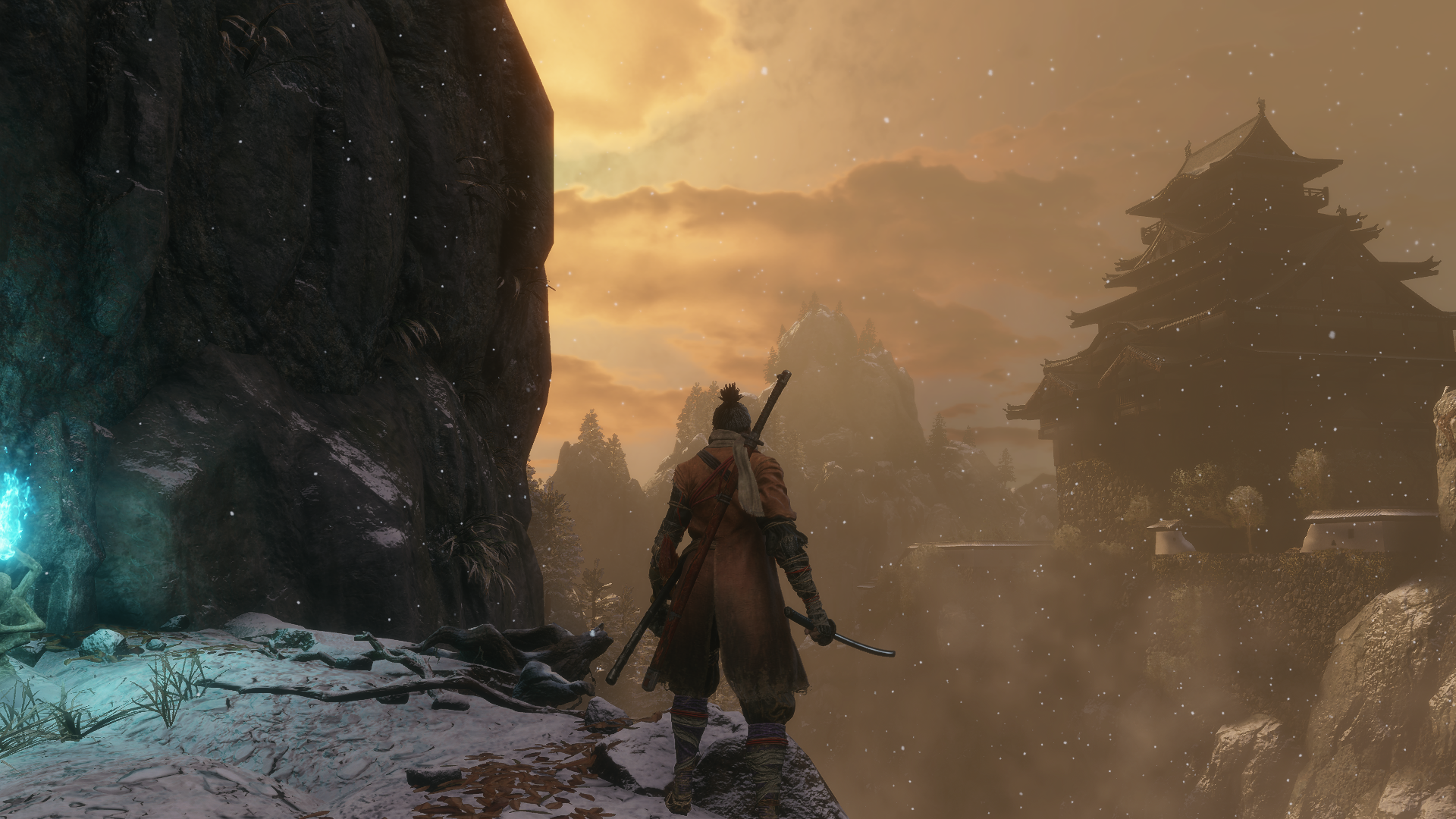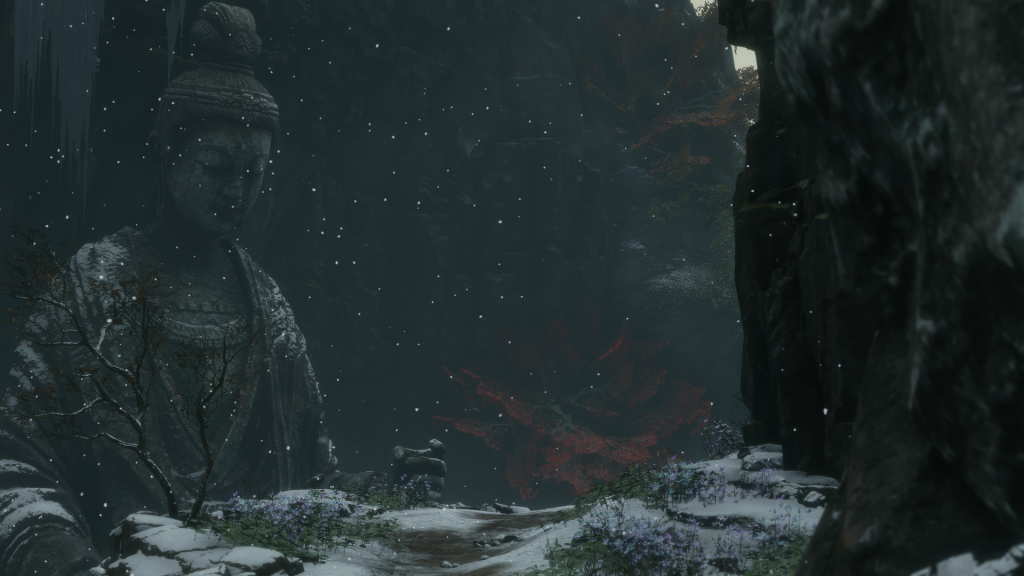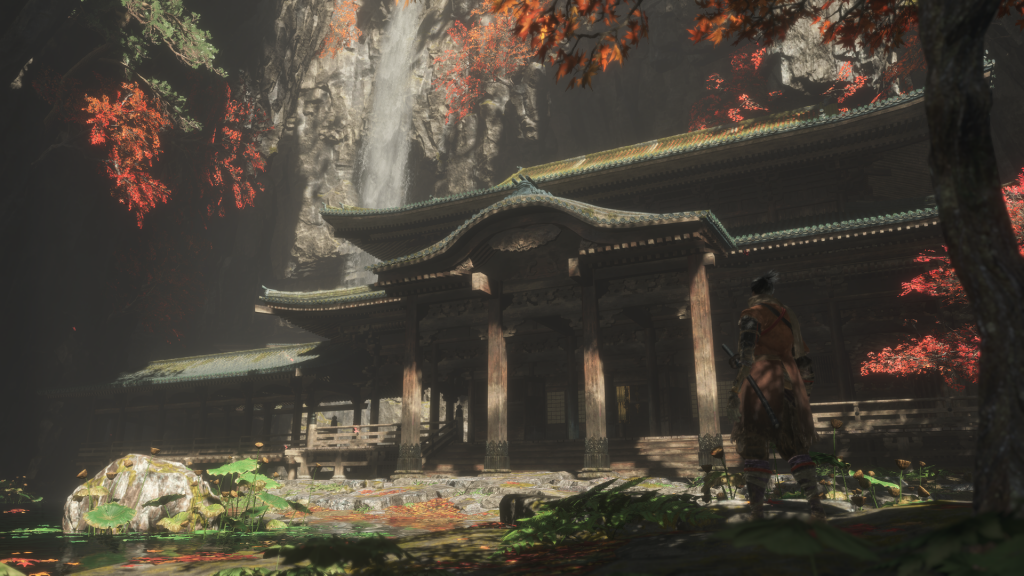
Only a few years ago, I considered From Software's Dark Souls series, and its spiritual successors, to be utterly unapproachable. It took a lot of poking, prodding, and watching Let's Plays before I got the nerve to jump into the series. But now, they're are some of my favorite gaming experiences of all time.
Fast-forward to 2019's Sekiro: Shadows Die Twice, the first title in the Dark Souls lineage that I actually played at launch. Like 2015's Bloodborne, it deviates dramatically from the core Souls formula, shaking up the combat and movement and conveying a different kind of intensity. For folks like me, to whom the studio's prior work means a lot, it's tough to judge Sekiro in a vacuum. But it feels like it sets itself apart enough to be both an iteration and its own unique experience.

In Sekiro, we play as the eponymous Sekiro (nicknamed Wolf), a shinobi in service to the last living member of a royal family. Lord Kuro, the young heir, descends from a legendary bloodline, and his blood can grant the ability to cheat death. Throughout the game, we explore a mythic vision of Sengoku-era Japan, fighting through enemies who want to capture the young lord for the ancient power living in his blood. The storytelling here is more direct than in Souls titles, but still full of hidden details and enigmatic side characters.
Sekiro uses its change of setting to bring new mechanical ideas into focus. Its world is dense and vertical, catering heavily to the grappling hook. Encounters often pit you against humanoid enemies that will meet you blade to blade, emphasizing the posture and parrying mechanics. Fights are brutal and quick, but Wolf is capable of resurrecting a limited number of times. The game repeatedly expands on From's usual mechanics in thematically resonant ways.
Combat in Sekiro is far and away the most tactile and electrifying I've seen in an action game to date. It introduces "posture" a representation of balance and stamina. When posture is depleted, enemies are left open to devastating death blows. It's immensely satisfying to ignore the majority of an enemy health bar by breaking their posture and performing a finisher. Frequently, health bars only serve as a reminder. You could defeat an enemy without breaking their posture, if you really had to. But you typically won't.
From Software also ups their game with the sheer beauty of the world they portray. The world of Sekiro conveys emotions sharply and poignantly. There are places that are tranquil and beautiful, ones that are somber and lonely, ones that are gloomy and foreboding. Its use of lighting and color is incredible. This game is the first Souls-adjacent game in which I constantly wanted to stop and take pictures.

Of all the games on my list, though, Sekiro is the hardest to actually recommend. Its difficulty is very inflexible, especially compared to other Souls games. It rarely offers space for tricks or exploits, and there is no co-op to fall back on. I placed it so high on my Top 10 list out of sheer honesty, because I can't deny how positive my own experience with it was. But I profoundly hope to see From finding ways to be more inclusive in the future.
Despite being stubbornly exclusionary, Sekiro also boasts a beautifully realized world and finely-honed mechanics. It feels sublimely polished, folding in almost a decade of accumulated design iteration. It was consistently one of the toughest and most enjoyable games I played this year, and I could not recommend it more to anyone willing to grapple with its difficulty.